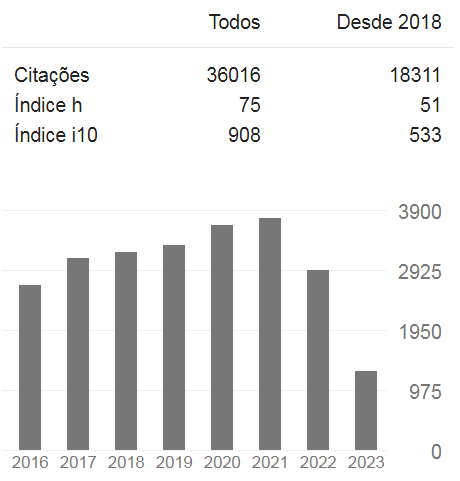The burden of living with obesity
DOI:
https://doi.org/10.35699/reme.v17i4.50204Keywords:
Obesity, Culture, Bariatric SurgeryAbstract
Perceptions of the human body have changed over time. Cultural aspects shape behaviours, social rules and lifestyles; nowadays it is an object of consumption: the ideal body should be slim and healthy. At the same time, epidemiological indices of obesity are alarmingly high. Obese people, in an effort to fit into an ideal model, resort to bariatric surgery. The present study aims to understand, from the experiences of two women and a caregiver, the meanings of living with obesity. It is a qualitative study that uses hermeneutic concepts. Dialogue with the participants centred in the Focal Life Story grasped from their narratives. It allowed the researchers to identify two themes: the social burden of obesity - it relates not to physical body weight, but to its impact in people's social life; and rebirth - the social burden of obesity is an important aspect: according to the participants it is worth going through the difficulties of a post-operative to return to a normal weight range; being once again included - in social groups to which body image is a "passport to happiness" - feels like a rebirth to them. In conclusion, understanding the logic/dynamics of these people's health needs can contribute to build practices from the perspective of people who are obese. Socio-anthropological knowledge is essential for caring for their needs and is an important aspect in the reorganization of health practices addressed to that population group.Downloads
References
Vasconcelos NA, Sudo I, Sudo N. Um peso na alma: o corpo gordo e a mídia.
Rev Mal-Estar Subj. 2004 mar; 4(1):65-93.
Foucault M. Microfísica do poder. 17ª ed. Rio de Janeiro: Edições Graal; 2002.
Le Breton D. Antropologia do corpo e modernidade. Petrópolis: Manole; 2011.
Ferreira FR. A produção de sentidos sobre a imagem do corpo. Interface
Comunic Saúde Educ. 2008; 12(26):471-83.
Ades L, Kerbauy RR. Obesidade: realidades e indagações. Rev Psicol USP. 2002;
(1): 197:216.
Rodrigues JC. Tabu do Corpo. 7ª ed. Rio de Janeiro: Fiocruz; 2006.
Le Breton D. Adeus ao Corpo. Antropologia e sociedade. Campinas: Papirus; 2003.
Yoshino NL. A normatização do corpo em excesso [tese]. Campinas:
Faculdade de Ciências Médicas Universidade Estadual de Campinas; 2010.
Ayres JRCM. Uma concepção hermenêutica de saúde. Physis. 2007; 17:43-67.
Gadamer HG. Verdade e método I. Traços fundamentais de uma
hermenêutica filosófica. 10ª ed. Petrópolis: Vozes; 2008.
Bellato R, Araújo LFS, Castro P. O itinerário terapêutico como uma tecnologia
avaliativa da integralidade em saúde. In: Pinheiro R, Silva Júnior AG, Mattos
RA. Atenção básica e integralidade: contribuições para estudos de práticas
avaliativas em saúde. Rio de Janeiro: Cepesc, IMS/UERJ, Abrasco; 2008.
Silva DGV, Trentini M. Narrativas como técnica de pesquisa em enfermagem.
Rev Latinoam Enferm. 2002; 10:423-32.
Gadamer HG. Verdade e método I. Traços fundamentais de uma
hermenêutica filosófica. 7ª ed. Petrópolis: Vozes; 2005.
Helman CG. Disease versus illness in general practice. J R Coll Gen Pract. 1981;
:548-52.
Canguilhem G. O normal e o patológico. 6ª ed. Rio de Janeiro: Forense
Universitária; 2010.
Alves PC. A Experiência da Enfermidade: considerações teóricas. Cad Saúde
Publica. 1993; 9:263-71.
Fellipe FM. O peso social da obesidade. Rev Virtual Texto Contextos. 2003;
(2):1-16. [Citado em 2012 jan. 03]. Disponível em: http://revistaseletronicas.
pucrs.br/fass/ojs/index.php/fass/article/view/963
Goffman E. Estigma. Notas sobre a manipulação da identidade deteriorada.
ª ed. Rio de Janeiro: Guanabara Koogan; 1988.
Carr D, Friedman MA. Is obesity stigmatizing? Body weight, perceived
discrimination, and psychological well-being in the United States. J Health
Soc Behav. 2005; 46:244-59.
Severiano MFV, Rêgo MO, Montefusco ÉVR. O corpo idealizado de consumo:
paradoxos da hipermodernidade. Rev Mal-Estar Subj. 2010; X(1): 137-65.
Mattos RS, Luz MT. Sobrevivendo ao estigma da gordura: um estudo
socioantropológico sobre a obesidade. Physis. 2009; 19:489-507.
Ferraz EM, Arruda PCL, Bacelar TS, Ferraz AAB, Albuquerque AC, Leão CS.
Tratamento cirúrgico da obesidade mórbida. Rev Col Bras Cir. 2003; 30:98-105.
Magdaleno Jr R, Chaim EA, Turato ER. Características psicológicas de
pacientes submetidos a cirurgia bariátrica. Rev Psiquiatr RS. Rio Grande do
Sul. 2009; 31:73-8.
Brasil. Portaria 492, de 31 de agosto de 2007. Definir Unidade de Assistência
de Alta Complexidade ao Paciente Portador de Obesidade Grave como o
hospital que ofereça assistência diagnóstica e terapêutica especializada,
de média e alta complexidade, condições técnicas, instalações físicas,
equipamentos e recursos humanos adequados ao atendimento às pessoas
portadoras de obesidade grave. Diário Oficial, Brasília: MS; 2007.
Lunardi Filho DW. O mito da subalternidade do trabalho de enfermagem à
Medicina. 2ª ed. Pelotas: Edições do autor; 2004.
Bonfim VS. Gadamer e a experiência hermenêutica. Revista CEJ. 2010;
(49):76-82.
Ayres JRCM. Cuidado e reconstrução das práticas de saúde. Interface
Comunic Saúde Educ. 2003-2004; 8(14):73-92.
Bellato R, Araújo LFS, Faria APS, Costa ALRC, Maruyama SAT. Itinerários
terapêuticos de famílias e redes para o cuidado na condição crônica: alguns
pressupostos. In: Pinheiro R, Martins PH. (Orgs.). Avaliação em saúde na
perspectiva do usuário: abordagem multicêntrica. São Paulo: ABRASCO; 2009.
Published
How to Cite
Issue
Section
License
Copyright (c) 2013 Reme: Revista Mineira de Enfermagem

This work is licensed under a Creative Commons Attribution 4.0 International License.






































